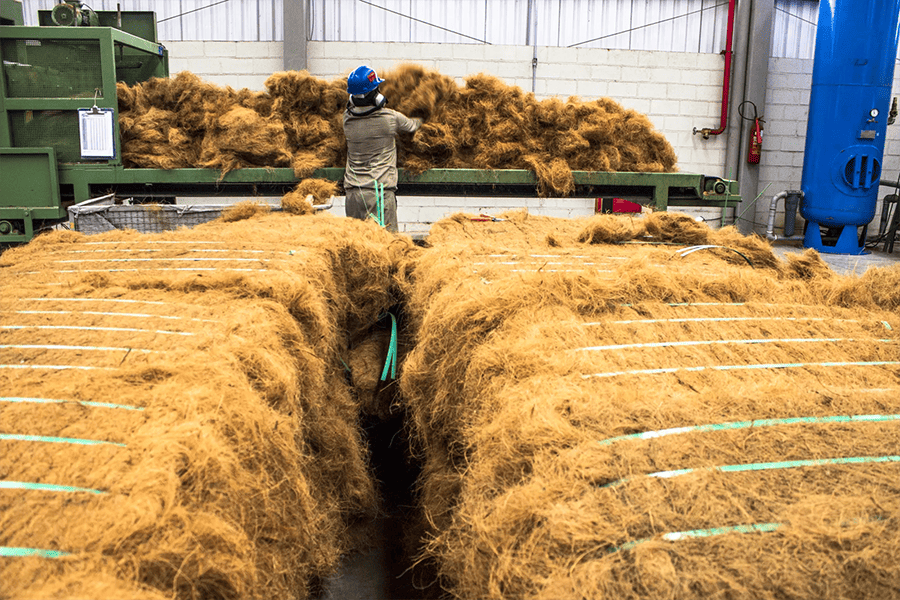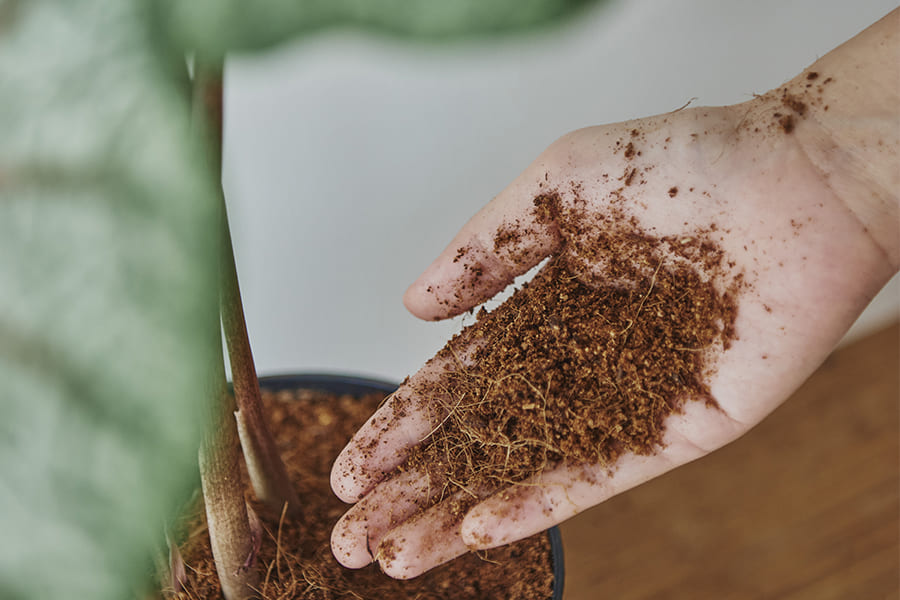BLOG POSTS & ARTICLES
Comprehensive Guide to Growing Strawberries in Coco Coir

Are you ready to take your strawberry cultivation to the next level? Imagine juicy, plump strawberries bursting with flavor, all grown in an environment that's not just conducive to their growth, but also kind to the planet. Welcome to the world of growing strawberries in coco coir—a revolutionary and eco-friendly growing medium that can transform your strawberry patch into a thriving oasis.
Benefits of Coco Coir for Growing Strawberries:
Coco coir, derived from coconut husks, has gained immense popularity among horticulturists and home gardeners alike due to its numerous benefits. When it comes to growing strawberries, coco coir offers several advantages that contribute to healthier plants and bountiful harvests:
Excellent Water Retention: One of the standout features of coco coir is its exceptional water-holding capacity. It can retain moisture while still providing adequate drainage, ensuring that your strawberry plants receive a steady supply of water without risking waterlogged roots.
Optimal Aeration: Unlike traditional soil, coco coir offers excellent aeration, preventing compacted roots and allowing for better oxygen flow. This is crucial for strawberry plants, as well-aerated roots promote vigorous growth and help prevent diseases caused by poor drainage.
pH Neutrality: Maintaining the right pH level is crucial for strawberry growth. Coco coir has a naturally neutral pH, which means you have more control over adjusting the pH to suit the specific needs of your strawberry plants.
Sustainable and Renewable: Coco coir is a byproduct of coconut processing, making it a renewable and eco-friendly alternative to traditional soil. By choosing coco coir, you're contributing to the reduction of waste and supporting sustainable agricultural practices.
Reduced Environmental Impact: Traditional soil cultivation often involves soil degradation and nutrient depletion. Coco coir, on the other hand, reduces the need for soil extraction, thereby mitigating environmental degradation and erosion.
Proper Cultivation Techniques:
While the benefits of coco coir are impressive, successful strawberry cultivation still requires proper techniques and care. From selecting the right strawberry varieties to ensuring adequate nutrients, maintaining the right moisture levels, and managing pests, every step of the process matters.
Selecting Strawberry Varieties:
When it comes to selecting strawberry varieties for cultivation in coco coir, it's essential to consider factors like climate, space availability, and desired yield. Here are some popular strawberry varieties that are well-suited for growing in coco coir, along with key considerations:
June-Bearing Varieties: These varieties produce a large harvest of strawberries in late spring to early summer. They're ideal for those looking for a concentrated yield for preserving, baking, or enjoying fresh.
Everbearing Varieties: Everbearing strawberries yield fruit throughout the growing season, with a slightly smaller harvest during the main season and occasional fruiting during other times. They're great for continuous supply.
Day-Neutral Varieties: These strawberries produce fruit consistently regardless of day length, making them suitable for a wide range of climates and growing conditions.
Consider Climate: Choose varieties that are well-suited to your local climate. Some varieties thrive in cooler climates, while others are more heat tolerant.
Space Availability: Consider how much space you have for planting. Some varieties spread more than others, so select those that fit well within your available garden space or containers.
Desired Yield: Determine how much fruit you'd like to harvest. June-bearing varieties offer a larger yield in a shorter period, while everbearing and day-neutral varieties provide a steady supply over a more extended period.
Flavor and Size: Research the flavor profile and size of strawberries produced by different varieties. Some are sweeter, while others have a more balanced taste, and sizes can vary from small to large.
Preparing the Growing Environment:
Selecting the right containers for coco-coir-based strawberry cultivation is crucial for optimizing growth and yield. Different containers offer distinct benefits, but they all require proper drainage and aeration to ensure healthy root development and prevent waterlogging. Here's a closer look at container options and the significance of drainage and aeration:
Container Options:
Pots: Standard Garden pots are a common choice for container gardening. They come in various sizes, making them suitable for individual plants or small clusters.
Hanging Baskets: Hanging baskets are a creative way to grow strawberries, maximizing vertical space. They add visual appeal and make harvesting easier.
Grow Bags: These breathable fabric containers offer excellent drainage and aeration. They are lightweight and can be positioned on patios, balconies, or even in small garden spaces.
Setting Up Coco Coir Medium
Coco coir is an excellent growing medium for strawberries, but it needs proper preparation before use. Follow these steps to prepare the coco coir substrate:
Rehydrating and Expanding:
-
Start by acquiring compressed coco coir blocks or bricks from a reliable source like Plantbest
-
Place the desired amount of coco coir in a large container or bin.
-
Slowly add water to the coco coir while fluffing and stirring it with a garden fork or your hands.
-
Allow the coco coir to absorb the water and expand. This process might take a few hours or overnight.
Rinsing and Buffering:
-
Once the coco coir has expanded, drain off any excess water. Squeeze out any excess moisture but avoid making the coir too compact.
-
Rinse the coco coir thoroughly with clean, pH-neutral water to remove any remaining dust, salts, or impurities.
-
To buffer the coco coir and adjust its pH, prepare a solution of water and a pH-balanced buffer agent. Follow the manufacturer's instructions for the correct dosage.
-
Thoroughly mix the buffered solution with the rinsed coco coir. This helps to neutralize any residual salts and stabilize the pH level.
Mixing Nutrients and Amendments:
Strawberries have specific nutrient requirements for healthy growth and bountiful fruiting. Here's how to provide the necessary nutrients and enhance the coco coir medium with amendments:
Essential Nutrients and Ratios:
Strawberries require three primary nutrients: nitrogen (N), phosphorus (P), and potassium (K), often represented as N-P-K on fertilizer labels.
During the initial stages, strawberries benefit from higher phosphorus levels to promote root development and flowering. Later, a balanced N-P-K ratio (e.g., 10-10-10) is suitable for overall growth and fruit production.
Consider using organic or slow-release fertilizers for a steady nutrient supply.
Adding Amendments for Aeration and Drainage:
-
Coco coir has excellent water retention properties but can sometimes become compacted. Mixing in amendments improves aeration and drainage, preventing waterlogged roots.
-
Perlite and vermiculite are commonly used amendments. They are lightweight and help create air pockets in the substrate.
-
To mix, combine the expanded coco coir with perlite or vermiculite in the desired ratio (e.g., 70% coco coir and 30% perlite).
-
Blend the components thoroughly to achieve a well-incorporated mixture.
Planting Strawberries:
Planting strawberry runners or transplants in coco coir involves several steps:
Preparation: Fill your chosen containers with pre-moistened coco coir, leaving a small space at the top.
Transplants: If using transplants, gently remove them from their pots and place them in holes in the coco coir, making sure the crown (where leaves meet the roots) is level with the soil surface.
Runners: For runners, identify healthy young plants with established roots. Position these in the container, burying the roots in the coco coir and ensuring the crown is at the right level.
Spacing: Space plants approximately 12-18 inches (30-45 cm) apart in rows. Rows should be around 24-30 inches (60-75 cm) apart.
Watering and Irrigation:
Moisture Levels: Coco coir retains moisture well, but it's important to prevent waterlogging. Check the moisture level with your finger; if the top inch of the medium feels dry, it's time to water.
Drip Irrigation: Drip irrigation is ideal for coco coir cultivation. It provides a consistent and controlled water supply directly to the roots, minimizing water splashing on leaves, which can lead to fungal issues.
Avoid Overwatering: Overwatering can lead to root rot and other fungal problems. Water deeply but infrequently, allowing the coco coir to partially dry out between watering sessions.
Nutrient Management:
Liquid Fertilizers: Use a balanced liquid fertilizer designed for strawberries. Dilute the fertilizer according to the manufacturer's instructions and apply it during the growing season, typically every 2-3 weeks.
Slow-Release Fertilizers: Incorporate slow-release granular fertilizers into the coco coir before planting. These provide nutrients gradually over time, reducing the risk of overfeeding.
Monitoring and Adjusting: Regularly monitor your plants for signs of nutrient deficiencies or excesses. Adjust the fertilizer application if you observe yellowing leaves (indicating nitrogen deficiency) or poor fruit development.
Conclusion
By embracing the strategies outlined here and staying true to the suggested practices, you're armed with the essential knowledge to commence a prosperous journey into cultivating strawberries. By nurturing strawberries in coco coir, you're not only tending to plants but also nurturing a deeper affinity for nature and sustainable methodologies. Happy growing!












__(3).jpg)








